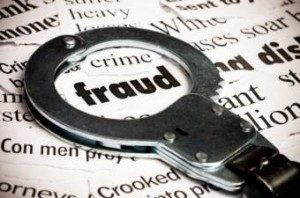 Mortgage application fraud risk was up on a quarterly basis while a suburban New York market emerged as the nation’s leading market for mortgage fraud risk, according to new data from CoreLogic.
Mortgage application fraud risk was up on a quarterly basis while a suburban New York market emerged as the nation’s leading market for mortgage fraud risk, according to new data from CoreLogic.
The CoreLogic National Mortgage Application Fraud Risk Index revealed a 2.4% uptick from 96 in the second quarter to 99 in the third quarter, although the index was also down 15% from the 116 level in the third quarter of 2019. CoreLogic attributed the quarterly increase to historically low rates fueling an increased housing demand, with purchase loans registering a slight increase in risk while refinances showed a slight decline in risk.
The Poughkeepsie-Middletown-Newtown area within New York’s Hudson Valley region topped CoreLogic’s chart for the metro market with the greatest risk of mortgage application fraud, with a 15% index rise from a 190 in the second quarter to 219 in the third quarter. New York ranked highest among the states for mortgage application fraud risk in the second quarter due to the Hudson Valley’s dominant chart position plus a sixth-place ranking for the New York City metropolitan area and a 12th place ranking for the Albany-Schenectady-Troy corridor in the upstate region.
Nevada placed second among the states for mortgage application fraud risk, with Las Vegas placing third among metro areas for the highest risk levels. Florida placed third among the states thanks to the presence of eight Sunshine State metros among the top 15 markets for high fraud risk.
CoreLogic noted that the highest-risk applications for both purchase and refinance loans were related to investment properties.
“Investment loan applications are showing a higher risk because real estate investors have a profit motivation for their activity,” said Bridget Berg, principal for fraud solutions at CoreLogic. “This introduces other factors and increases the risk compared to a purchase for personal use. Investors often own other real estate and are more likely to have undisclosed ownership and transactions in process.”
On the flip side, Berg credited the Department of Veterans Affairs (VA) programs for having the lowest risk levels.
“Conversely, VA loans have lower risk because they are restricted to a select group of borrowers and are for personal occupancy, except for certain refis,” she added. “This makes identity issues and straw buyer situations rare. Many VA borrowers are employed by the military, reducing income risk also.”

 DSNews The homepage of the servicing industry
DSNews The homepage of the servicing industry










